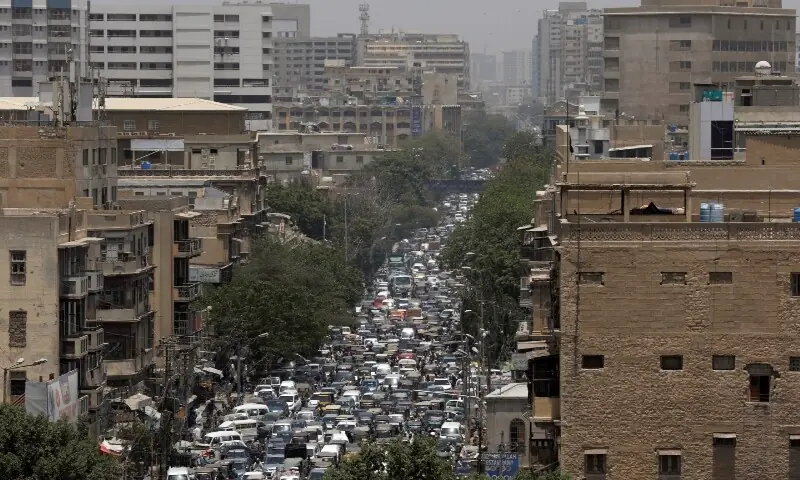Karachi's urban context is characterized by dense and narrow streets, frequent and long power outages, limited ventilation and a general inability to afford air conditioning, which often leads to energy theft. In such environments, mandatory adoption of green building codes is a necessary shift from government and development authorities. Temperatures rise every year, as does inflation, making thermal comfort unaffordable for both lower and middle income groups.
Regulations can be tailored to the size of the development, with support mechanisms for enforcement, legal implications and economic benefits of each law. Currently, most green reviews, such as E.g. LEED [Leadership in Energy and Environmental Desigh] or EDGE [Excellence in Design for Greater Efficiencies]are only relevant to high-end projects and therefore irrelevant to low and middle income developments.
Current Karachi statutes require rooms in a building or house to have a minimum proportion of openings or windows; For example, in a living room, the opening size should be 10 percent of the room area; This changes to 7.5 percent for other rooms and 15 percent for the kitchen.
It all looks impressive on paper, but that doesn't guarantee human comfort. These regulations were put in place decades ago with a focus on sanitation and are not practical given today's extreme heat.
The city's building codes must take into account the oppressive heat when most residents can't afford to stay cool
Building regulations in neighboring countries like India or international standards like ASHRAE [American Society of Heating, Refrigerating and Air Conditioning Engineers] focus on performance. Instead of determining how big a window should be, we need to ask basic design questions like: “Does this room have enough fresh air?” Is it designed to allow cross ventilation?'
Building codes in India ensure cross-ventilation in at least two rooms of every house, while internationally it also specifies how often the air should be changed per hour to ensure people's comfort. Karachi's bylaws should mandate consideration of wind direction and encourage the use of high and low vents, cement grilles, roof turbines, etc. to ensure habitability during power outages. While ventilation is seen as a formality, elsewhere it is seen as a necessity to make buildings livable and comfortable.
In addition, roof cooling treatments should be prescribed, such as reflective lime plaster, reflective paint or clay tile coverings. For projects over 500 m², the integration of green roofs should be mandatory depending on the optimal load capacity. The CoolRoof program in Ahmedabad began as a pilot project and is now a municipal ordinance that serves as a key example from our own context. The use of solid stone without insulation for south-facing external walls should also be prohibited. While builders argue against the prices of such products, due to the reduced load overall they have reduced the structural cost of the building, making it more of a question of convenience than cost.
Another way to improve comfort is to ensure minimum reflectivity for all exterior plasters/paints, thereby reflecting the maximum amount of solar radiation rather than absorbing it.
Countries such as Bangladesh, India and Egypt have set U-values (how quickly heat is dissipated) and R-values (heat resistance of the wall) for each structure, requiring the use of insulated materials. Karachi desperately needs such a green building code.
As for the environment, shading devices such as chajjas, verandas or sunshades should be mandatory on south and west facades. The devices should leave 50 pc of uncovered garden space allowing for rainwater infiltration and tree growth, with one shade tree mandatory per 30 feet of frontage.
Efficient water management can also play an important role in cooling our city. Rainwater collection pits, permeable pavers, and low-flow devices in homes can help reduce waste. For larger projects, a required portion of gray water (from sinks and showers) should be recycled for landscaping or flushing. This ensures that water saving becomes as standard as laying bricks.
For effective implementation, the building community must anticipate the financial value of adopting these rules. While this can bring prestige and recognition to higher income housing projects, housing for middle and lower income groups needs to be targeted. Incentives may include bulk procurement, tax breaks and reduced permit fees.
Finally, instead of relying solely on government agencies, which are often distrusted, incentives could be built into the system. For example, real estate financing institutions and banks can offer lower interest rates and more favorable loan terms for greener projects. Creating bulk purchasing networks through material suppliers ensures that environmentally friendly products are available at lower prices, so manufacturers will naturally switch to them. Housing associations, neighborhood associations and buyers' associations can create demand for cooler housing; Builders will adapt to competition.
These are not luxury ideas, but rather a necessity for survival in a city where most people cannot afford air conditioning. Government authorities, private institutions and citizens must act urgently to ensure comfortable living across all income groups.
The author is an architect and urban planner and currently runs her own office “Beyond Facades”.
Published in Dawn, The Business and Finance Weekly, October 27, 2025
